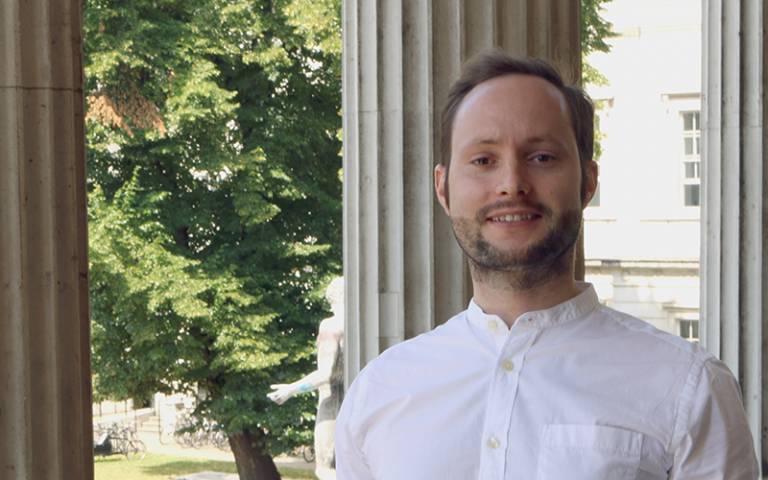John Hales' Virus Laser Detection Article Published in Nature Communication
12 August 2019
Dr John Hales, Prof Paul Dalby and Prof John Ward at UCL Biochemical Engineering have published an article in Nature Communications titled “Virus lasers for biological detection” describing a novel analytical technology which promises to open up new avenues for monitoring biology

How and why do we monitor biological organisms, such as cells or bacteria? When manufacturing a drug using biology we need to constantly test that the cells are making the medicine correctly. Elsewhere we need to diagnose illnesses and monitor how much and what kind of bacteria or virus is in someone’s blood. For this, we could attach dyes to the cells and then use complex technology to see how much light is absorbed or re-emitted by the dye. There are many drawbacks to these methods which can make them unreliable, but it is often the best we have. Until now.
Virus-laser detection uses synthetic biology to design a modified virus that will attach itself to a specific molecule that we want to detect. The more of that molecule the more virus attaches, but instead of just re-emitting light, the virus forms a part of a laser system and so emits very bright, easy-to-detect light of a specific wavelength.
This system is currently being pioneered in UCL Biochemical Engineering where its initial application is in monitoring the manufacture of drugs using biology. One of the biggest advantages it has over other methods is that it can be incorporated into a manufacturing process for “live” monitoring to provide real-time feedback on the process. The conventional way of monitoring drug production would be to manufacture a whole batch of medicine, then test it, wait for the results to come back and if there’s a problem a whole batch could be wasted, but with virus-laser detection a problem can be detected and rectified straight away.
"Virus lasers have the potential to become a once-in-a-generation analytical technology that will have a transformative impact in biological manufacturing, clinical diagnostics, and environmental sensing."
Dr John Hales, August 2019
One of the other exciting features of virus-laser detection is that if you double the number of probes you don’t get twice as much signal, you can get up to a ten thousand times more signal. This means it could provide a fast, cheap and reliable way of diagnosing illnesses in a way that’s impossible now. It could also be used in environmental sensing applications, such as testing water purity.
John Hales has since been awarded €100,000 from the European Union ATTRACT fund to allow the team to undertake commercially-focused research and development of the technology and has recently been awarded a Royal Society Edinburgh Enterprise Fellowship to accelerate the commercial translation of the virus laser technology.
Read the full Nature Communication article here
 Close
Close

